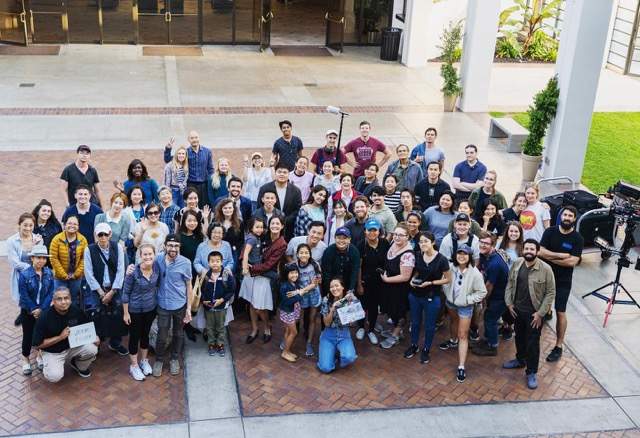Premiering at the Los Angeles Asian Pacific Film Festival in October 2020, Hello from Taiwan is an extraordinary film which is simultaneously personal and universal. Told through the perspective of a young Taiwanese-American girl, writer/director Tiffany Frances has crafted a story which shows the complexity and fragility of the world. It’s no coincidence that the upheaval that has divided this family has been exacerbated by an earthquake. but The use of the 1989 San Francisco earthquake in the story is handled with delicate perfection.
To achieve the look and feel of the late 1980’s, Ms. Frances hired production designer Shi Min Yong, who recently received the award for Excellence in Production Design for Short Film at the 44th Asian American International Film Festival for her work on Hello from Taiwan. Other accolades for this production include winning the Grand Jury Prize at the Taiwanese American Film Festival, Best Short Film at the Los Angeles Diversity Film Festival, Best Drama and Best Director at SeriesFest, among numerous others.
Ms. Yong’s ability to capture 1989 in San Jose, CA through her work as PD is mesmerizing. From architecture to automobiles, fashion and technology; the tone of the 80’s is perfectly manifested in Hello from Taiwan because of Shi Min’s dedication to the story.

The film begins with Christy (Brandilyn Cheah of NBC’s multiple Primetime Emmy Award-Winning Series This is Us) and her mother Joyce awakening to a frightening earthquake. Very quickly, it becomes apparent that Christy’s parents have been separated for a year. When the mother and daughter travel back to Taiwan to reunite with her father and two sisters, the quiet emotional conflict of the family becomes more palpable. The subdued awareness of the adolescent Christy is juxtaposed against the overt fragility of her father.

The choice of the filmmakers to have the audience witness these events through Christy allows for a nonjudgmental experiencing of all the different characters. With subtlety, Shi Min has created a sense that the family is caught in a place where they are transitioning and redefining their identities. A prime example is Joyce’s home. While the bones of it are deeply rooted in the US with American style wood panels walls, old wallpaper, carpeted flooring, and a period appropriate electronic appliance, the shelves are filled with Asian decor, family photos, Chinese painting etc.
Even Joyce’s car, a classic American station wagon, is adorned with bamboo beaded seat covers and a Chinese amulet. When Christy meets her sisters at the airport and reacts to the Taiwanese toys they brought back, the culture clash is further reinforced. While creating mood boards and obtaining the right locations is a common occurrence of her role, Ms. Yong is adamant that creativity is as essential to her work as any director or actor.
To obtain the numerous period appropriate cars for Hello from Taiwan without deeply impacting the overall budget, Shi Min took to crowd sourcing as she informs, “Renting from picture car rental houses is expensive and there are towing costs. For the background picture cars, we put out flyers to cars that we saw on the street and reached out to any friends who own old cars. Even so, you can’t plan for every dollar, as was proven when the hero car broke down on set and had to be towed for driving scenes.”
Tiffany Frances was inspired to create Hello from Taiwan based on her own real-life events as a young girl. The authentic mixture of the American and Taiwanese perspective is inseparable from the story. The film was purposefully a mix of East meets West. Shi Min achieved a fusion of two cultures using vintage American photo references and a saturated color palette reminiscent of Asian art house cinema.
It’s no happy coincidence that the film’s visual language is a result of the strong collaboration between Ms. Frances and Ms. Yong, who are able to relate an American experience that also embraces its connection with other parts of the world. Filmmakers like these are truly bringing a welcomed fresh voice to American cinema.
Writer: Arlen Gann